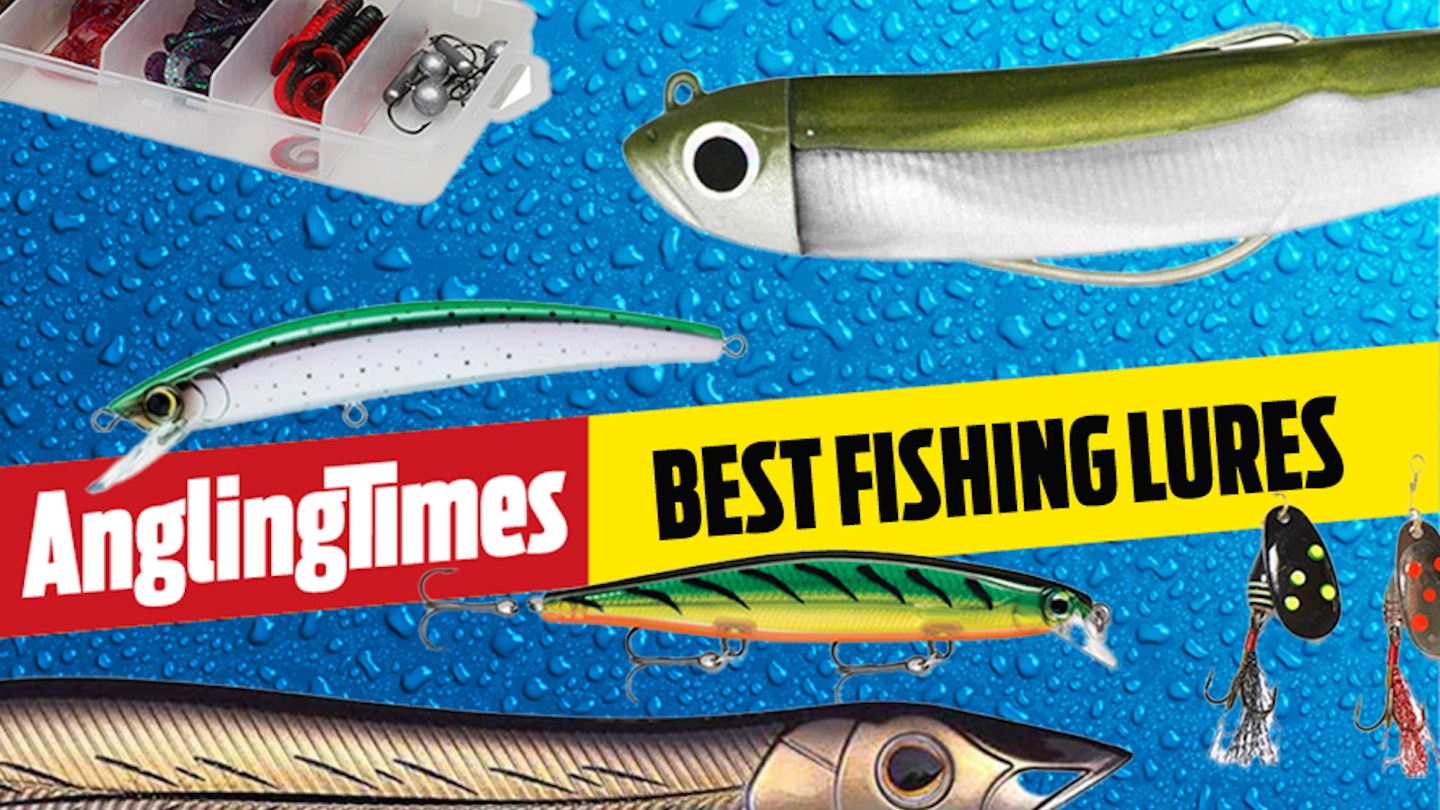Lure fishing is becoming one of the most popular branches of angling in the UK, with some of the best fishing lures being so realistic now there has never been a better time to get out there. Whether you are targeting predatory coarse species like pike and perch or venturing to the coast to try and tempt a bass or pollack, the ease and versatility is what makes it so appealing to many anglers.
There aren’t many more exciting moments in angling than feeling a fish aggressively slam into your fishing lure, it comes with an extra amount of satisfaction too, as without you working them, even the best fishing lures do nothing, and so you feel as though you really earned that bite. There are so many different methods to tempt a fish when lure fishing, from fishing on the surface to searching the depths with a diving or soft plastic lure, or trying to catch anything that swims with a little jig or spinner, the choices really are endless.
The best fishing lures at a glance:
• Best Surface Fishing Lure For Bass: Xorus Patchinko - View offer on eBay
• Best Lure Fishing Jig Kit For Perch: Savage Gear Fat Minnow T-Tail Kit - View offer on Fishing Tackle & Bait
• Best Beginner Fishing Lure: Mepps Perch Spinner Pack - View offer on Total Fishing Tackle
• Best Crankbait Fishing Lure: Yo-zuri Crystal Minnow - View offer on Amazon
The other appealing aspect about lure fishing is that you need minimal tackle, and it can be done on limited time. In a world that is getting busier, just taking a couple of hours to get down to your local waterway before or after work is often all that is needed to tempt a fish. With a rod, net and small tackle bag all you really need for lure fishing, it can be grabbed at a moment’s notice to allow you to get out fishing. In this guide, we take a look at a variety of the most successful types of lures to help you catch more fish...
Soft Plastics
Soft plastic lures have become incredibly popular since their conception. These fishing lures can be made into any shape, size or colour the mould allows, and as you will see in most tackle shops, the choice is endless. They are incredibly versatile too, they can be fished on a steady retrieve, bumped along the bottom or jigged, and because of their soft nature, they feel very realistic, so when the fish takes, they seldom let go.
These lures often come as just a body section, so you can hook them onto a jig head, allowing you to increase or decrease the weight so the lure works how you want it to.
Best soft plastic fishing lure
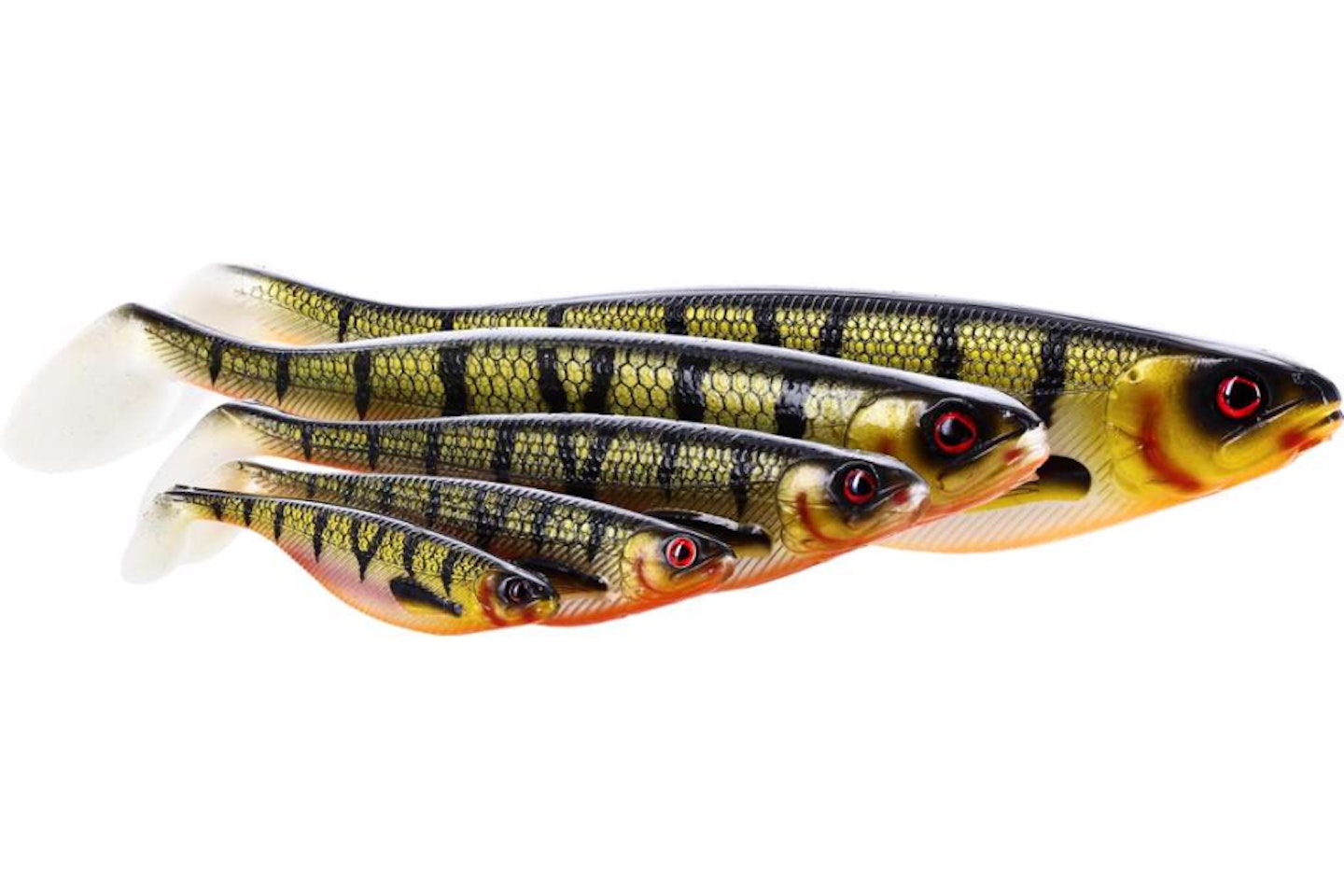
www.ebay.co.uk
Westin ShadTeez lure, with its deep body, wide tail and slender waist come together to create a realistic swimming action that’s unrivalled.
Even with the slowest retrieves the ShadTeez produces flashes and rolls indicative of sick or injured prey.
Perfect for jigging, spinning and even using vertically the ShadTeez stands head and shoulders.
Available in 11 variants and 5 different lengths 7,9,12,16, & 19cm
Pros
- Perfect of multiple species and techniques
- High body design gives great belly flash
Cons
- Its soft body is prone to damage
Surface Lures
There aren’t many more exciting ways to tempt a fish than getting them to take a surface lure. The adrenaline rush is quite something when you see a fish attack it. These types of lures will either sit upright in the water or flat depending on their action and are usually best fished with sweeping motions or violent flicks on the rod tip to get the lure to "pop" along the surface, hence why they are also referred to as 'poppers'.
This motion causes this fishing lure to dart along the surface like an injured fish, causing a lot of commotion that is highly attractive to predatory fish. Surface lures can be one of the hardest lures to get a bite on but it’s very rewarding, and when the fish are taking them, it’s very hard to beat, both in terms of excitement and effectiveness.
Best surface fishing lure for bass
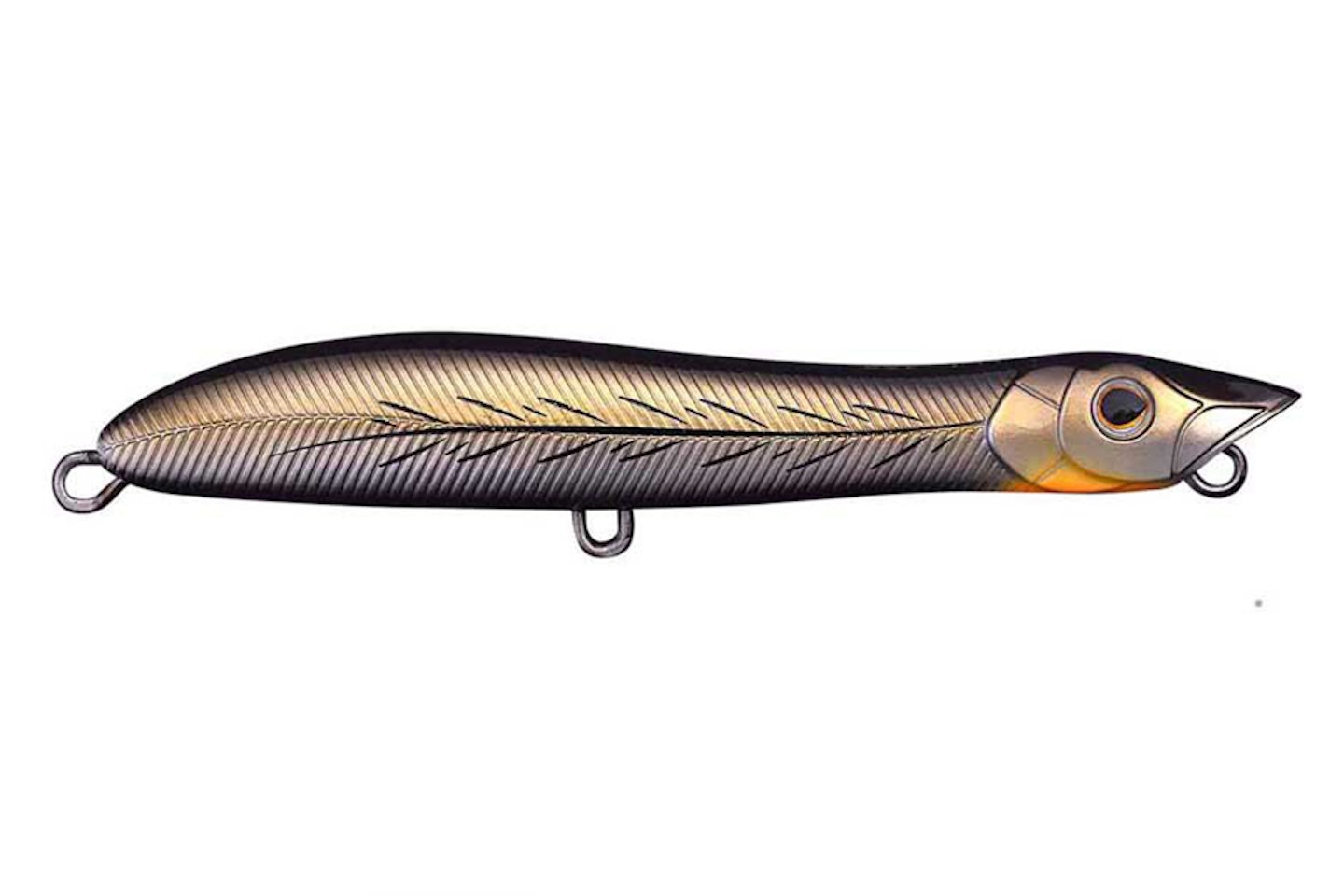
www.ebay.co.uk
One of the, if not best, surface lures available. The action of the Xorus Patchinko is incredible and the fish seem unable to resist them. Great for pike and bass.
Come in sizes from 8.5cm to 14cm with 12 variants.
Pros
- Floats really well, bottom down action helps with hook ups
- Amazing action
Cons
- Not great for species like zander
Diving Lures
This type of fishing lure is one most anglers will be familiar with, a 'plug' or 'crankbait' as it's also known is a hard plastic or wooden lure that has a plastic or metal vein on the front of it. When retrieved, this vein causes resistance, and the lure will dive under the water, allowing you to fish different depths to find the fish. The faster the retrieve, the deeper the lure will dive, with most lures having a maximum diving depth which will be stated by the manufacturer.
Reeling and pausing, allowing the lure to rise and fall, is a very successful way of fishing this type of lure, with a sharp movement on the rod making the lure jolt erratically, which can instigate a take. If you know the depth of your venue, it can be great way of working the lure close to the bottom but out the way of snags and debris on the lake or riverbed.
Best crankbait fishing lure
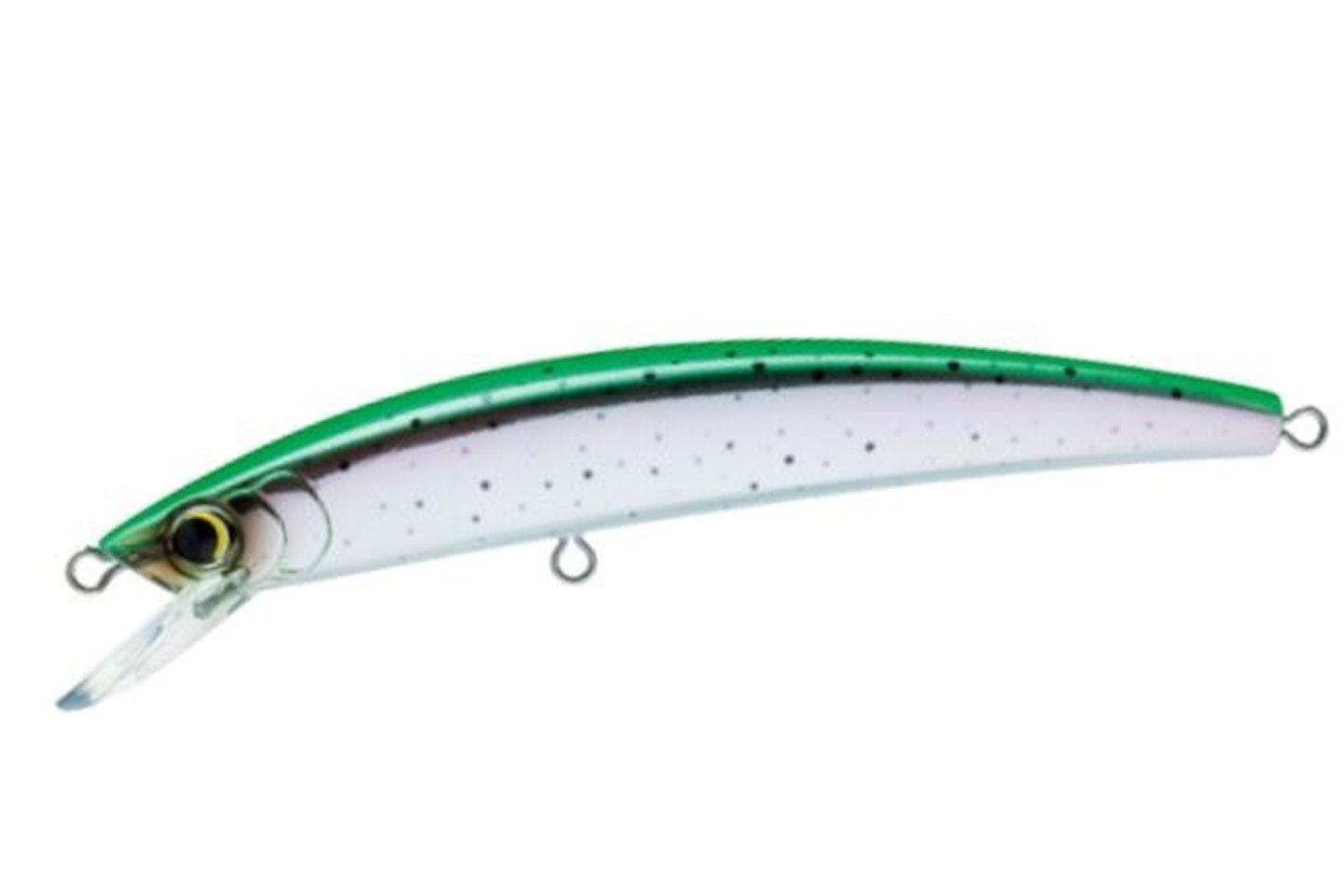
The Prism Flash finish on these Yo-Zuri Crystal Minnow lures makes them highly reflective, making them a perfect choice for fishing in low light conditions, they will maximise any light they can, allowing you to fish longer.
They are available in a range of colours and sizes, so you're sure to find one that works for you.
Pros
- Fantastic rolling action.
- Can be fished on a variety of retrieves in salt and freshwater.
Cons
- Maximum dive depth of 1m.
Spinner
No lure guide would be complete without the humble 'spinner'. This fishing lure has been around for decades and still accounts for thousands of fish captures a year with mackerel, perch and pike all falling to it regularly. The spinner consists of a treble hook, with a small section of steel bar where a shiny blade and sometimes some beads will sit, when retrieved this blade will rotate causing it to vibrate and flash.
The spinner will sink, so it is best fished on a straight retrieve, allowing it to sink a bit further with each cast before you start reeling. Once you have found the depth the fish are feeding, allow the lure to sink to that depth every time before you reel in. This is a great lure for beginners to start with, as nearly every species, big or small, will take it, and it’s so easy to fish with.
Best beginner fishing lure
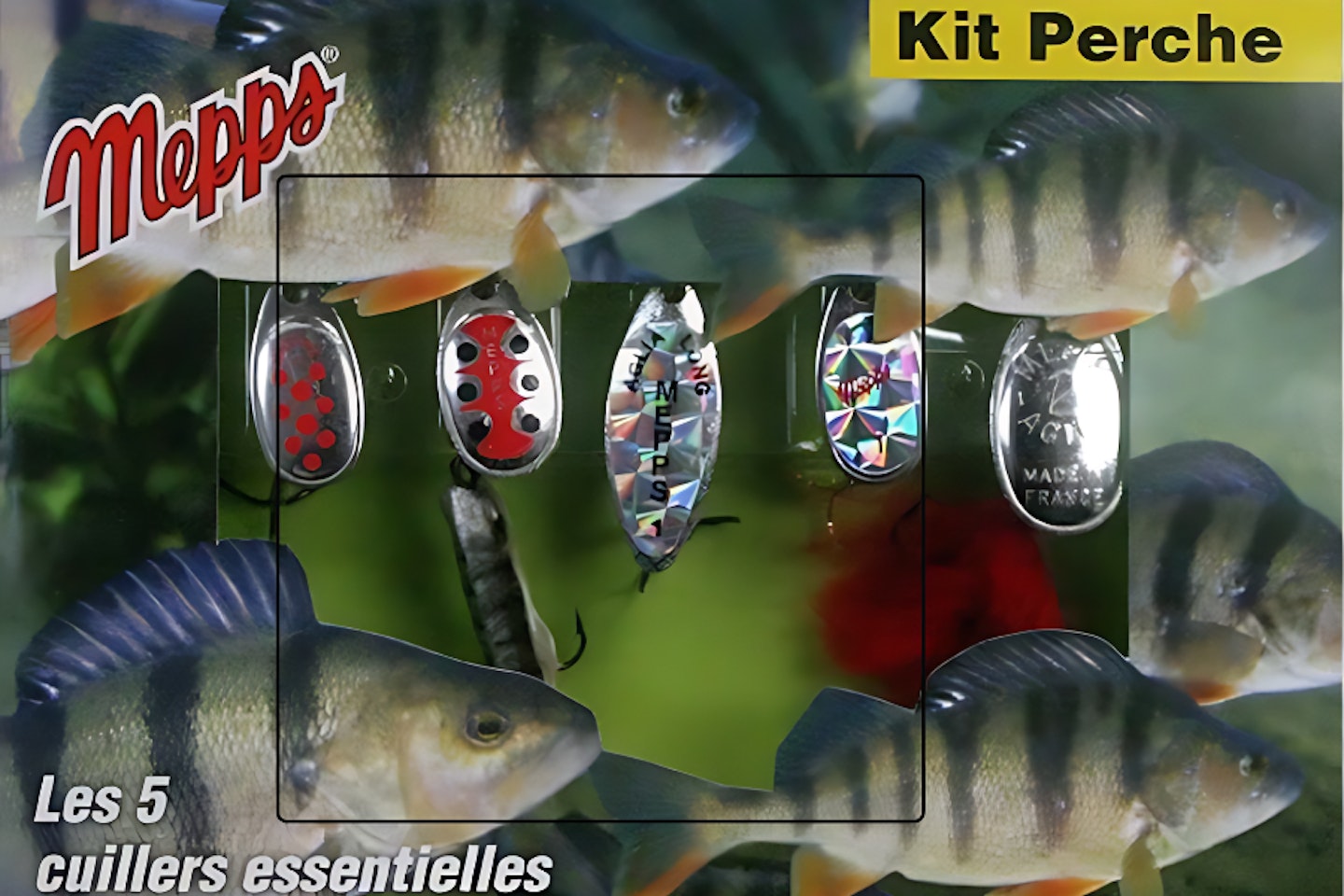
www.total-fishing-tackle.com
A range of 5 lures selected by Mepps consultants. The perfect kit to start you spinning fishing journey. Specifically for perch but will attract other predators.
The kit contains Size 1 (3.5g) & Size 2 (4.5g)
Pros
- Very simple and easy to use
- Effective for perch but can catch other species
Cons
- Very lightweight so only suits a mobile approach
Jigs
'Jigging' is the action of lifting the rod up and down to cause the lure to move in a similar manner. The explosion in 'drop shotting' has led to the development of a newer style of soft plastic jigs which come in various forms and sizes, from micro perch patterns to larger pike jigs. Large jigs are best fished in conjunction with a jig head, allowing the lure to hit the bottom before being worked, often most successful when drifting in a boat.
Drop shotting is a method that works like a paternoster rig, you have a weight at the end of the mainline and your hook is tied above that depending on how far off the bottom you want the lure to work. Little shakes on the rod tip cause the lure to shimmer and wiggle without moving the lead, allowing it to be very slowly worked back, giving the maximum amount of time in each spot for a fish to take.
Best lure fishing jig kit for perch
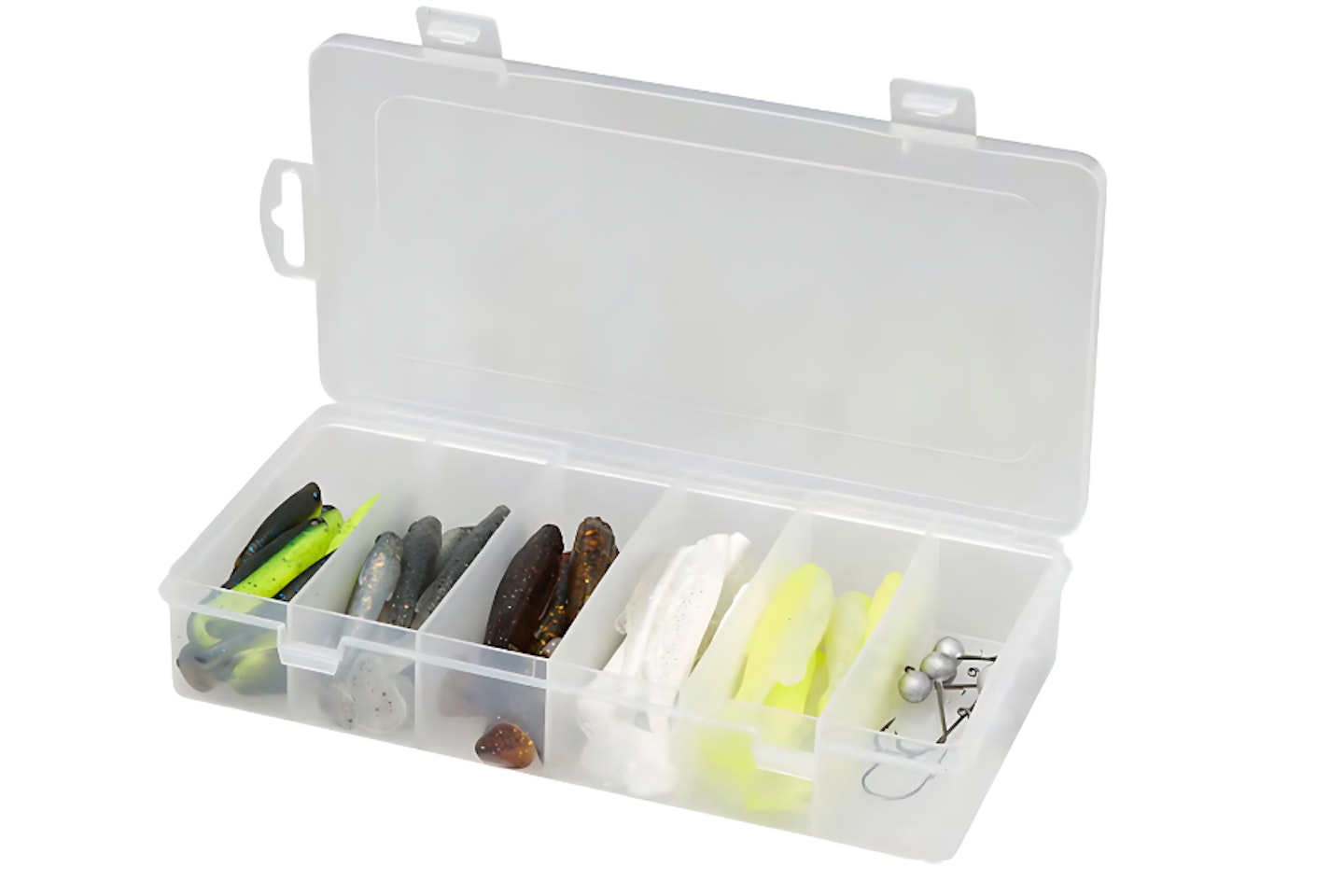
www.fishingtackleandbait.co.uk
This Savage Gear Fat Minnow T-Tail kit, offers a variety of lure and jig head combinations to ensure you can cover most situations. The softbaits and light jig heads make it perfect for searching those nooks and crannies where predators lurk.
Kit contains 30 lures, 10 of each size 7.5, 9, & 10.5cm and 6 jig heads from 5g to 12.5g
Pros
- Ideal choice for catching a range of species.
- Perfect for jigging
Cons
- Prone to being ripped by fish.
Spinner Baits
A 'spinner bait' is an American conception that accounts for loads of bass each year, however, since coming to the UK it seems our predatory fish, especially pike and perch, really seem to like this fishing lure. They look like nothing in particular and as unnatural as anything a fish would likely see in the wild, yet they just can’t seem to help themselves and takes are often very violent.
Similar to a spinner, they are best fished on a straight, steady retrieve, as the blades and soft plastic attachments on the lure do the work for you, vibrating, pulsing and flashing as they are reeled in, sending out loads of distress signals to any nearby predator.
Best spinner bait fishing lure
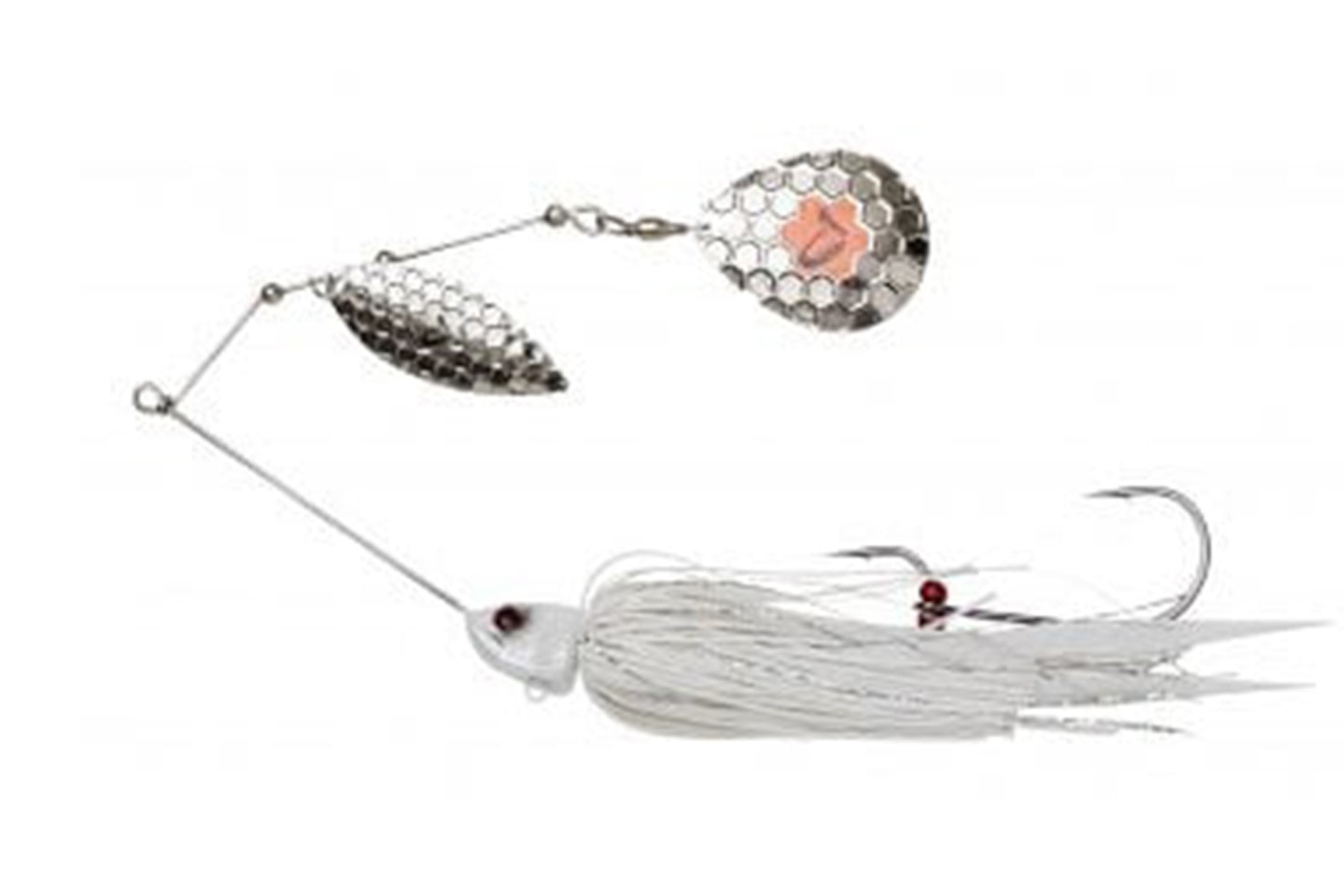
www.northeasttackle.co.uk
Designed to catch pike predominately these Savage Gear Da'bush Spinner Bait lures are unlike anything else out there. Coming in a range of sizes and colours, if you want to get the attention of the fish, this lure will certainly do that.
Pros
- Very attractive.
- Easy to fish with.
Cons
- Can be a little too outrageous in some situations.
Artificial Flies
Fly fishing is mainly associated with trout, but using fly tackle to catch large pike and bass has become very popular, especially at places like Chew Valley Reservoir, where fish over 30lb are regularly caught. Large flies known as 'streamers' are the most popular, much larger than anything you would associate with more traditional fly fishing.
The fly is made from bright material that has reflective properties designed to flash and pulse through the water when stripped back. Some are weighted, whilst others rely on the line to sink them, it all depends where in the water column the fish are feeding. These lures can be fished on any retrieve, they are very versatile and can be presented any way you need to.
Best lure for fly fishing for pike
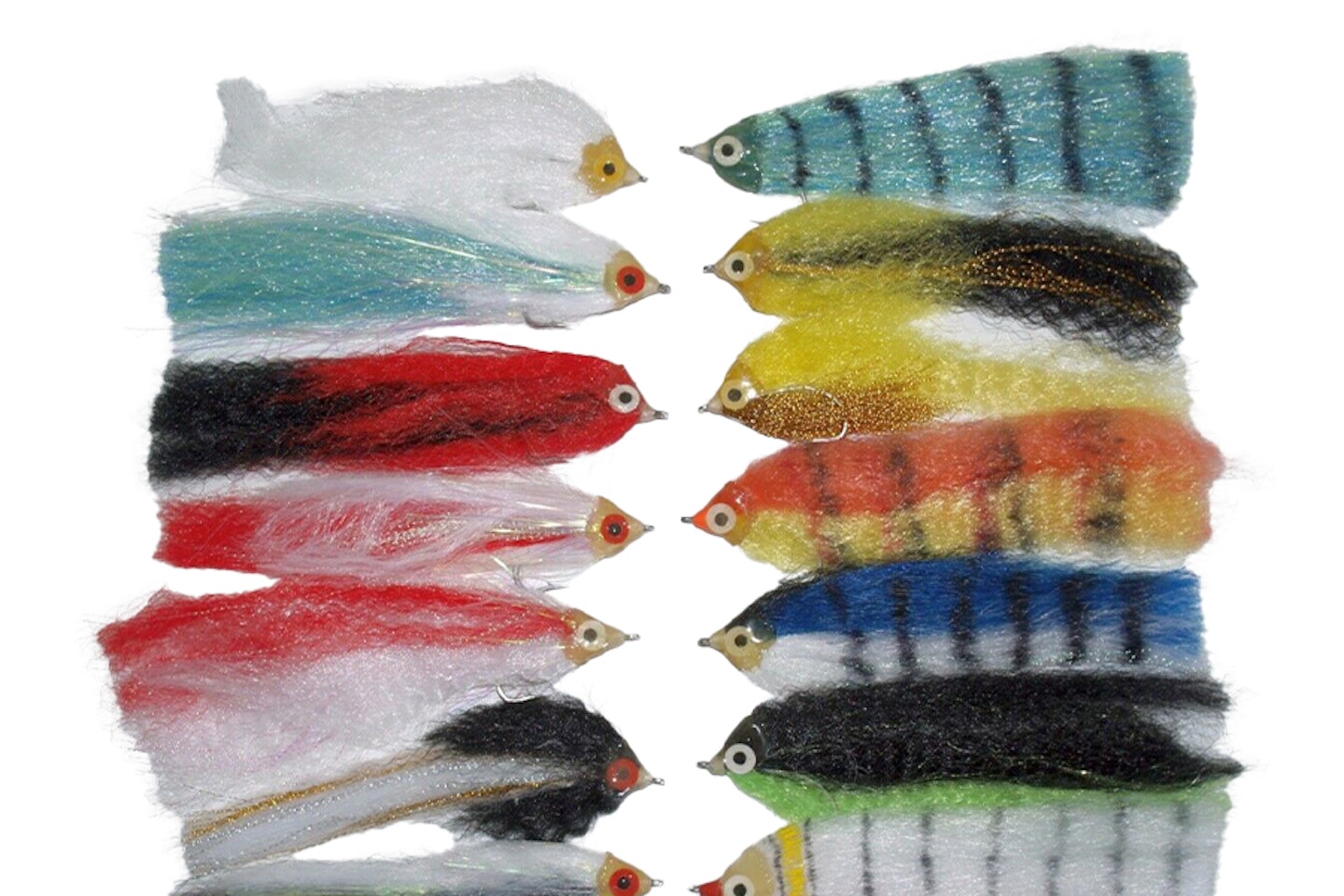
www.ebay.co.uk
This selection of Sovereign Super Baits Flies has everything you need to start fly fishing for pike, a great selection of colours to help you ring the changes and instigate a take.
Pros
- Lots of colours and patterns.
- Robust, won't be destroyed after one fish.
Cons
- The larger size fly can take some getting used to casting.
Suspending Jerkbait
This type of diving lure is very unique in the way it sits underwater due to its neutral buoyancy. Once you have wound the lure down to the desired depth and you stop reeling, instead of floating back up or sinking, the lure will just sit there. This serves two purposes, not only does it stop you getting snagged, it allows you to slowly work the lure at the depth the fish are feeding at, which can be really useful in cold water.
The lure is best worked with small, sharp jerks on the rod, which causes it to move very erratically before pausing, this gives the fish time to investigate the lure and very often the bites will come just after you pause the retrieve. They are also very effective if you know the fish are holding up somewhere and you only have a short area to work the lure in.
Best fishing lure for cold water
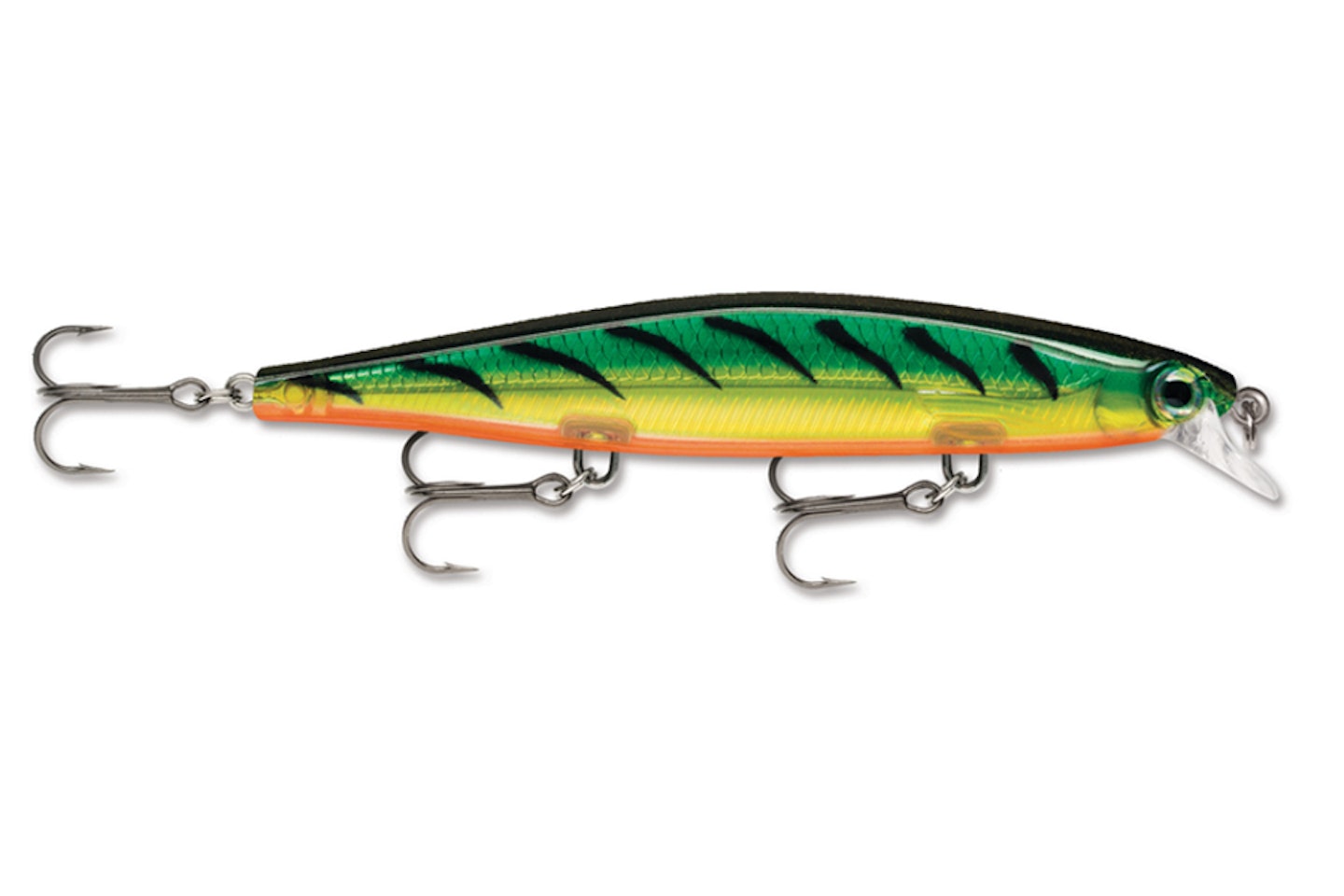
Designed to mimic the behaviour of a dying fish, the Rapala Shadow Rap lure starts darting and rolling around when the rod tip is flicked. Very realistic action that helps catch wary fish.
Pros
- Suspending action keeps lure in front of fish for longer.
- Realistic action.
Cons
- Not the easiest lure to use effectively.
What to look for in a fishing lure
The varying nature of venues, weather and fish you will be targeting can all impact what the best fishing lure to use is, and as such we would always recommend carrying a few different types and colours just to ensure you have all bases covered. The seasons can have a big impact too, as the predatory fish will be hunting different types of prey throughout the year and matching your lure to what the fish are feeding on is usually best.
Being realistic about what you are most likely to catch will also help you be more successful. If there are no larger fish present in your venue, there is little point casting out a large 25cm lure. By refining your tactics down to target the fish present, you will see your catch rate soar. Remember, a big lure does not always mean a big fish, some of the largest fish every season are caught on tiny lures.
If small fish can be seen leaping from the water, it is often a sign they are being chased by a predator. In this instance, a lure that works close to or on the surface would be a great choice, as it's working in the upper layers where the fish are hunting. If you can’t see any activity, it's often worth starting on a diving lure to help search out the depths and find where the fish are feeding. The colour of a lure can also play a massive part in how willing the fish are to take it. Some days natural patterns will work and other days the brightest, most unnatural colours will score best, take a selection and keep the changes coming.
Glossary
Soft plastic lure: A lure that has a soft, rubberised body designed to feel more natural when the fish take it.
Floating/diving lure: A hard plastic lure that will float on the surface but, when retrieved, will dive under the surface thanks to a plastic vein on the front. They are also known as crankbaits.
Rough ground: A name given to a fishing mark where the bottom is made up of rocks, boulders, weed and other items you are likely to snag up on.
Weedless: A lure design, where the hook point is buried in the lure to prevent it getting caught up, the hook is exposed when the fish bites down on the body of the lure.
Jig head: The metal weight, generally with a hook attached that is used to mount a soft plastic lure on to give it the weight to cast and sink to the bottom.
Paddle tail: A flat, rounded section at the back of a lure that causes drag in the water, causing it to kick erratically.
Rattle: Some lures have a hollow internal compartment that is filled with ball bearings that knock together when retrieved to create a rattling sound.
Diving vein: A thin, rounded plastic or metal plate mounted on the front of a lure. When retrieved, it causes drag that forces the lure downwards.
Walk the dog: A method of retrieving a surface lure to make it look as natural as possible. By maintaining a constant retrieve and flicking the rod tip, the lure will snake from side to side, looking like an injured fish.
Lure action: This refers to the way a lure moves when it is retrieved by the angler.
Drop shotting: The method of using a weight at the end of the line and attaching the hook further up the line. This is then jigged back slowly to the rod tip.
Paternoster rig: A rig that involves the lead being at the end of the line and one or two hooks being attached above it, this keeps it away from the lakebed and reduces the resistance when a fish takes the hookbait.
<strong>Frequently asked questions on fishing lures</strong>
What fishing lures are best for beginners?
If you have just started lure fishing, then it's best to keep things simple with your lure choice. The easiest lures to fish with are soft plastics or spinners, they work really well on a constant retrieve and do all the hard work for you and as a bonus, fish will readily take them. They are generally the cheapest lures too, so you don't have to spend a fortune to see if you enjoy lure fishing or not.
What are the advantages of drop shotting?
Drop shotting is a method that has taken the UK lure fishing scene by storm in recent years. It involves using a paternoster-style setup and slowly working the lure by jigging the rod up and down. The main advantage is that it allows you to work the lure in the zone the fish are likely to be waiting to ambush in for much longer periods, as you don't have to retrieve it to make it work. If you used a sinking or diving lure in this situation, it would be in the best zone for a bite for a fraction of the time as a drop shot rig would be.
How do you get the best out of a surface fishing lure?
Surface lures all come in various shapes and sizes, and all need to be worked a little differently. It is important you don't tie the knot directly onto to the eye, use a knot that creates a small loop for the eye to sit in, as it will give much more action to the lure. Generally, sweeping motions and sharp pulls on the rod will make the lure dance and skim on the water, creating lots of disturbance. Just cast the lure you have available to you and try lots of different actions, don't become a robot and do the same retrieve, as varying it can often create an opportunity.
Author Aidan Bordiuk is an enthusiastic angler who enjoys all fishing disciplines from match fishing to beach casting. He is currently occupying the position of Commercial Content Writer at Angling Times.
